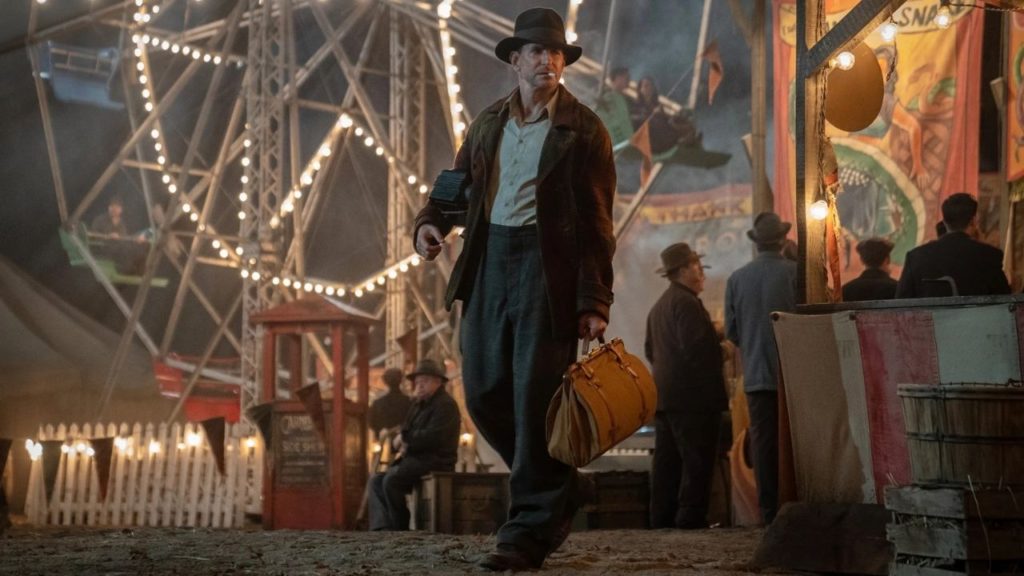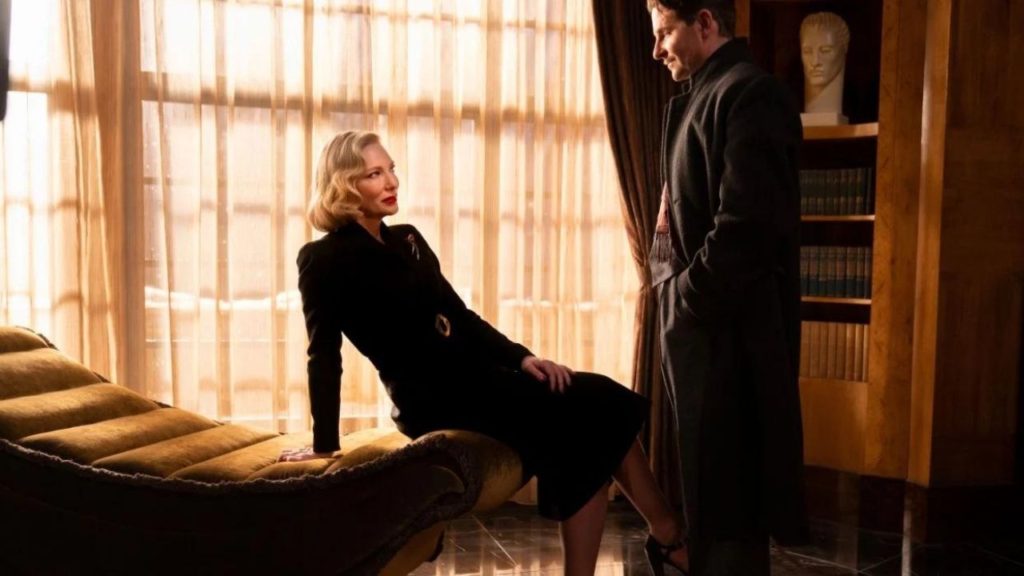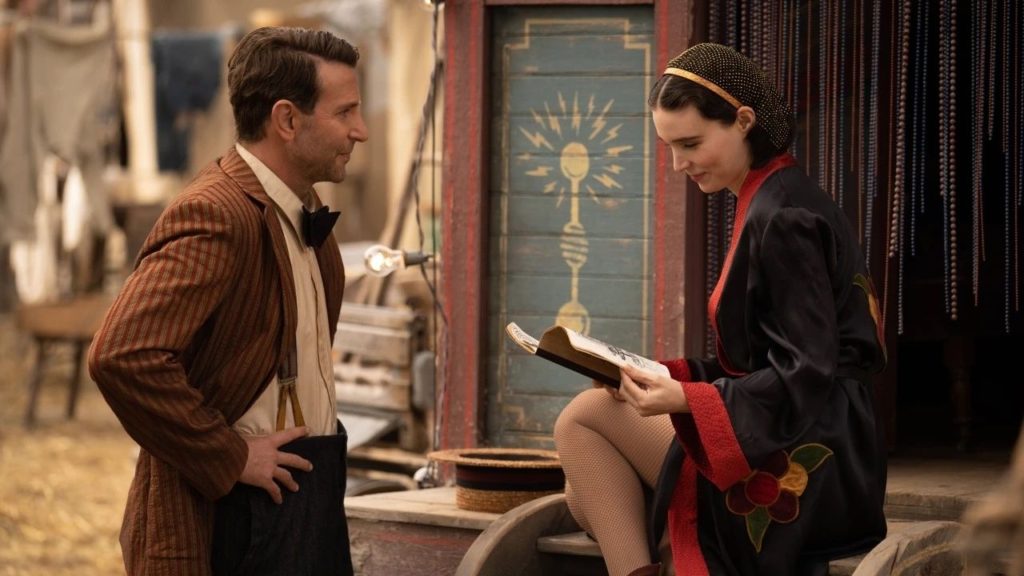The opening minutes of Nightmare Alley are an absolute masterclass in building character and tension through action. When we first meet Bradley Cooper’s Stanton Carlisle he’s dragging a corpse across a room. He then dumps the body into a hole in the ground and sets the whole house on fire. He gets on a bus, travels across the country, before landing at a traveling circus; the kind that boasts a bizarre miscellany of acts that range from everyday mentalism, to the kind of reprehensible sideshows that make you feel guilty just for watching. Stan is first offered some menial work. And then a full time gig. And all of this happens without him having spoken a single line of dialogue.
By the time Bradley Cooper utters his first words, our mind is already reeling with questions. Who died? Why was Stan trying to dispose of the body? Is he a murderer? Where is he running to? What is he running away from?
From the moment the movie opens, right up until Stanton finally opens his mouth and tries to convince a carnival “geek” (an alcoholic man who is dehumanized for the sake of entertainment) that he isn’t going to hurt him, there is more than enough foreshadowing for us to know exactly how this story will play out. And yet, there isn’t a single moment in Guillermo del Toro’s latest effort that feels predictable.
Is He Man or Beast?

Based on William Lindsay Gresham’s desperately depressing novel of the same name, Nightmare Alley tells the story of a carnival grifter whose burning resentment towards his father, and pathological drive to rise above his station, sends him on a downward spiral into the darkest recesses of the American Dream. Here, America is that land of opportunity and second chances, where anyone can start anew and make something of themselves. But she is also a cruel and unforgiving mistress, deriving as much joy from meteoric rises as she does from thunderous falls.
Stanton Carlisle, with his opportunistic drive and checkered past, is the perfect prey for such seductions. Nothing will stand in the way of his ambitions. And the path of destruction that he leaves in his wake is littered with remains – both real and metaphorical. Family. Friends. Lovers. They are, all of them, mirrors to Stan in one way or another. And del Toro’s use of eyes as a recurring motif in the movie is a constant reminder of that. They are, all of them, completely and utterly dispensable.
The cast is amazing. From Rooney Mara’s waifish Molly, who falls far too easily for his easy charm, to Cate Blanchett’s statuesque femme fatale, there isn’t a single weak link here. David Strathairn plays broken, beautifully. And Toni Collette is sad, and serene, and sexy.
That said, this is very much Bradley Cooper’s movie. Cooper is pure unchecked charisma. One of the greatest actors of this generation, he is one of a handful of performers who can show you the inner life of this horrible, terrible, no-good man, and still have you rooting for him to come out unscathed once everything is said and done.
Behold, the One-Eyed Man!

What Guillermo del Toro has done here is create an unrelenting sense of tension. You know that none of this will end well for our protagonist, but you still spend these 150 minutes on the edge of your seat and waiting for the other shoe to drop.
The sparse dialogue. Nathan Johnson’s Alexandre Desplat-esque score. Production Designer Tamara Deverell’s aesthetic – the way she transitions the various stages of Stan’s life, from fugitive, to wandering carny, to nightclub mentalist to the rich and famous, each with its own unique color palette and gothic undertones. Dan Laustsen’s cinematography, where every shot is meticulously framed with that 1930s glow. All of it works in perfect harmony to create and atmosphere that is both alluring, and deadly, and painfully tragic.
Everything Is as Strange as It Seems!

With Nightmare Alley, Guillermo del Toro’s fascination with monsters is once again front and center. And much like his previous efforts, the “monsters” in question aren’t horned, or gilled, but are instead the tragic and broken parts of our own psyche. It is the unbearable weight of being human. It is the struggle to balance ego and a fragile moral conscience. It is the darkness within, the savage, the sinner, and the secret sadist, the inner demons that are constantly at war with the better angels of our nature.
All of this makes for an incredible character study. One with equal parts grit and grandeur. Of one man’s slow descent into a hell of his own creation. It is, like Orson Welles did with Citizen Kane, the story of a man who wanted to world, but ended up losing himself and his soul.
Nightmare Alley is a lavish adult drama. The kind that drags you into its immersive world with its slow-burning plot, sumptuous production design, tense characterizations, and the kind of savagely self-destructive protagonist that you can’t help but empathize with.









Follow Us